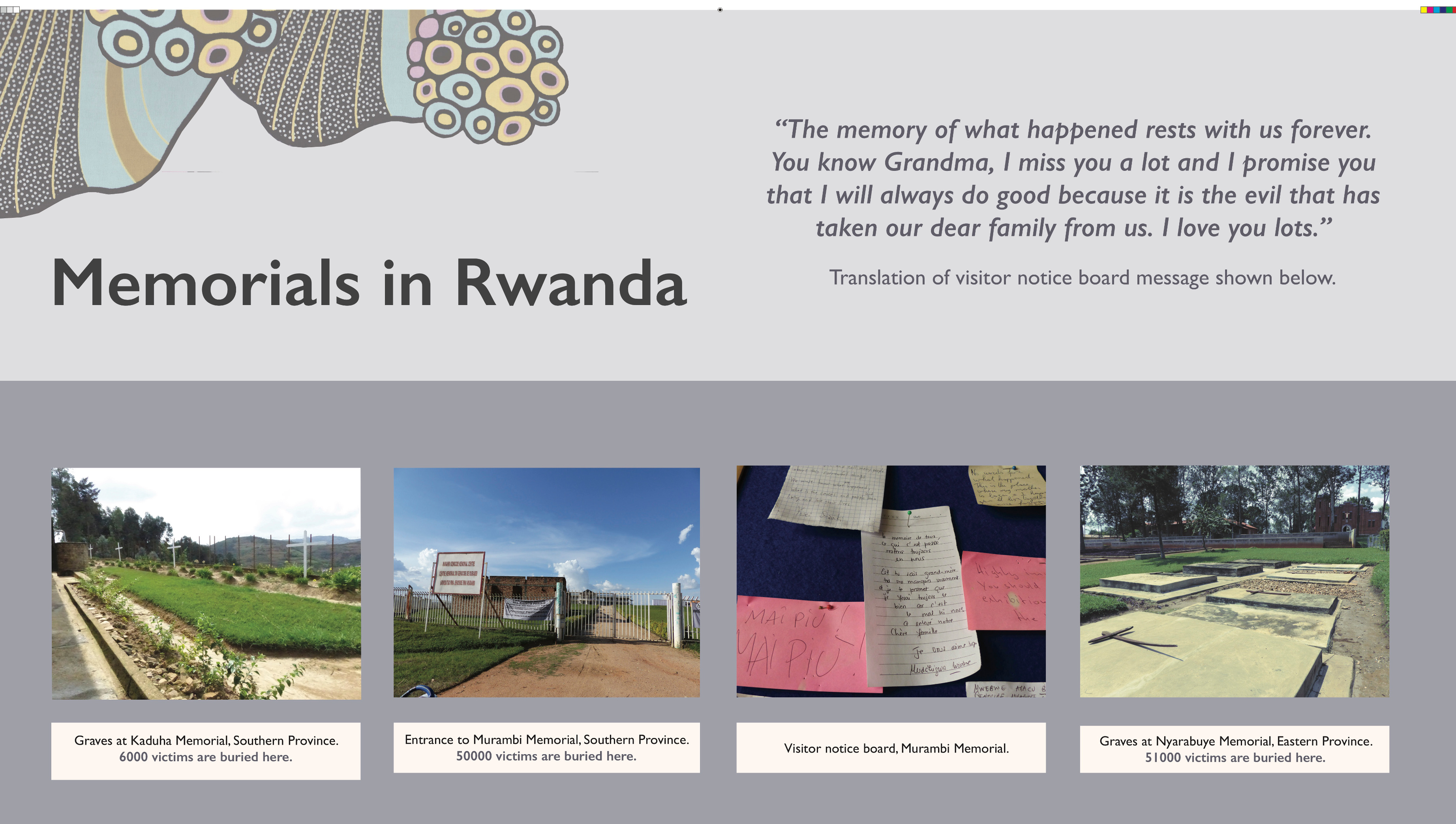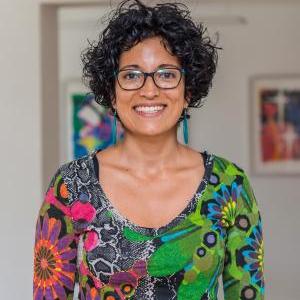During the 1994 Genocide against the Tutsi in Rwanda, more than one million people lost their lives in just 100 days. Today there are 243 memorials, often marking sites where genocide took place. Many memorials preserve the remains of those who perished.
The Kwibuka Rwanda exhibition at the Pitt Rivers Museum in Oxford highlights a small selection of these memorials, telling the story of genocide survivors' attempts to come to terms with loss and trauma. It gives voice to the 'care-takers', survivors who work at memorials, honouring the dead by cleaning and preserving their remains.

This exhibition is based on Dr. Julia Viebach's extensive research on memory and justice in Rwanda between 2009 and 2014. The photographs reflect the visual method used during her fieldwork. All names used are pseudonyms. The exhibition has been curated in consultation with members of Ishami Foundation, and of the Rwandan community in Oxford and the Pitt Rivers Museum.
The Kwibuka Rwanda exhibition was launched on 21 April 2018. The launch doubled as the 24th annual commemoration of the Genocide. Every April Rwandans in the UK come together in a series of national events commemorating victims of the 1994 Genocide against the Tutsi. This year Oxford was to host to one of the four major Kwibuka (‘remember’) ceremonies held at Mansfield College Chapel. Members of the Rwandan community in the UK were joined for the commemoration by Oxford residents and academics. In her opening remarks, Professor Mary Bosworth commented on the importance of research such as Julia’s in the aftermath of atrocity and to prevent atrocities from happening in the future. Rwanda’s High Commissioner to the UK, Yamina Karitanyi, also spoke, along with Jean Fooks, the Lord Mayor of Oxford, and a panel made up of British and Rwandan speakers. The commemoration and launch event was jointly organised by Ishami Foundation, Rwandese Community Association Oxford, Pitt Rivers Museum, the National Association of Rwandese Communities in UK and the Faculty of Law. See the video of the commemoration event.
Kwibuka Rwanda has attracted broad media attention and was featured on BBC South. Many visitors have seen the exhibition and left important remarks on the visitor notice board attesting to the impact of the exhibition: One visitor noted that, ‘despite the theme, the enduring gratitude for the human spirits ability to transcend the worst atrocities through care for fellow humans’, whilst another one reaffirmed the educational value noting to have gained, ‘greater awareness of Rwandan history and culture. Thoughts on how a different people commemorate their dead.’ A further visitor expressed feelings of ‘sadness, Awareness of the SCALE of the massacre. Awareness of how easy it is to put aside others' pain because we feel helpless to address it.’
Kwibuka Rwanda is an educational opportunity to learn about the pain of distant ‘others’ in a time of heightened xenophobia and indifference to the suffering of ‘others’. It humanizes stories of suffering and gives names and faces to loss and survival. Kwibuka Rwanda is important because it is a vehicle to create empathy when many people believe that genocide and mass violence, “is of one time and of one country, and who don’t think to look around us, and who don’t hear the endless cry” (Alain Resnais, director of Night and Fog). Kwibuka Rwanda is in itself a way of remembering the dead, a way of listening and experiencing, “the endless cry” that concerns us all. It gives voice to those who survived and transports their otherwise distant experience into close proximity of English everyday life.
Listen here to the background and aims of Kwibuka Rwanda
Voices from partners
Theirs was a cry never heard. Through the commemoration and the Kwibuka Rwanda exhibition, we remember them and are united in our resolve to act against those who seek to bury the horror of the crime of genocide in revisionism.
John Binama, Chairman of The National Association of Rwandese Communities in UK.
For some partners, their understanding of the Genocide Against the Tutsi is very personal:
My brother, Irankunda Jean-Paul, was killed aged 7 and was denied the chance to grow up and live his dreams and show the world what he could do. We were not able to bury him, he continues, as his remains were lost and scattered. Memorials in Rwanda bear witness both to the victims buried there and to the others, like Jean-Paul, whose body was never found. They serve as evidence of the 1994 genocide against the Tutsi in Rwanda. This is why I believe that memorials are essential and offer one of the crucial mechanisms the world needs to keep the memories alive.
We are pleased to support such an important project as Kwibuka Rwanda. It is in line with our philosophy of using stories and other means such as memorials as tools for raising awareness, education and keeping memories alive.
Eric Murangwa Eugene MBE, Founder and Executive Managing Officer of Ishami Foundation and Survivor of the Genocide against the Tutsi.
Of the artistic significance of the project, Laura Van Broekhoven, Director of Pitt Rivers Museum, said:
I feel this is a moving exhibition about cultured practices of coping with genocide and incomprehensible loss and death through remembrance and ritual cleansing.
Professor Laura Peers, Curator of the Americas and Professor of Museum Anthropology, added:
Museums are spaces for learning about living cultures, about how humans deal with their realities through cultural activity. All human societies have ways of mourning their dead and of dealing with the remains of their ancestors. Kwibuka Rwanda helps us to consider the legacies of genocide and how Rwandans have extended older forms of mourning to commemorate and honour the dead, activities that help survivors to cope and to heal.
Even if something feels far removed from today’s world or apparent status quo, history has shown us that it can always be repeated – and I say that as a German. Countering the increasing social apathy by stimulating peoples’ – particularly youth, empathy for others, is key to preventing these atrocities from happening again. Even if one person comes away from the exhibition and googles the 1994 Genocide against the Tutsi in Rwanda for further information that will be a step in the right direction.
Dr Julia Viebach

